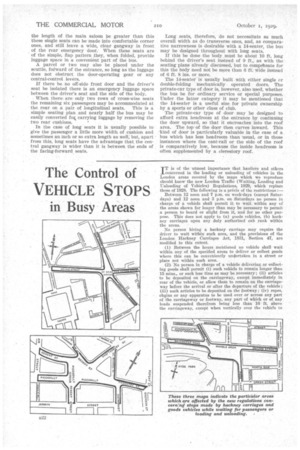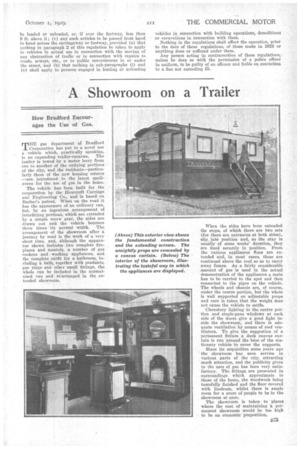The Control of VEHICLE STOPS in Busy Areas
Page 56

Page 57

If you've noticed an error in this article please click here to report it so we can fix it.
IT is of the utmost importance that hauliers and others concerned in the loading or unloading of vehicles in the London areas covered by the maps which we reproduce should know the new London Traffic (Waiting, Loading and Unloading of Vehicles) Regulations, 1929, which replace those of 1928. The following is a precis of the restrictions :— Between 12 noon and 7 p.m. an week-days (except Saturdays) and 12 noon and 3 p.m. on Saturdays no person in charge of a vehicle shall permit it to wait within any of the areas shown for longer than may be necessary to permit a person to board or alight from it, and for no other purpose. This does not apply to (a) goods vehicles, (b) hackney carriages upon any duly authorized cab rank within the areas.
No person hiring a hackney carriage may require the driver to wait within such area, and the provisions of the London Hackney Carriages Act, 1831, Section 47, are modified to this' extent.
(1) Between the hours mentioned no vehicle shall wait within any of the specified areas to deliver or collect goods where this can be conveniently undertaken in a street or place not within such area.
(2) No person in charge of a vehicle delivering or collecting goods shall permit (i) such vehicle to remain longer than 15 mina., or such less time as may be necessary ; (ii) articles to be deposited on the carriageway, except immediately in rear of the vehicle, or allow them to remain on the carriageway before the arrival or after the departure of the vehicle ; (iii) such articles to be deposited on the footway ; (iv) ropes, chins or any apparatus to be used over or across any part of the carriageway or footway, any part of which or of any loads suspended therefrom being less than 16 ft. above the carriageway, except when vertically over the vehicle to
be loaded or unloaded, or, if over the footway, less than 9 ft. above it; (v) any such articles to be passed from hand to hand across the carriageway or footway, provided (a) that nothing in paragraph 2 of this regulation be taken to apply to vehicles in actual use in connection with the moving of any obstruction of traffic or in connection with repairs to roads, sewers, etc., or to public conveniences in or under the street, and (b) that nothing in sub-paragraphs (i) and (v) shall apply to persons engaged in loading or unloading
vehicles in connection with building operations, demolitions or excavations in connection -with them. •
Nothing in the regulations shall affect the operation, prior to the date of these regulations, of those made in 1928 or anything done or suffered under them.
Any person acting in contravention of these regulations,. unless he does so with the permission of a police officer in uniform, to be guilty of an offence and liable on conviction to a fine not exceeding lb%






















































































































